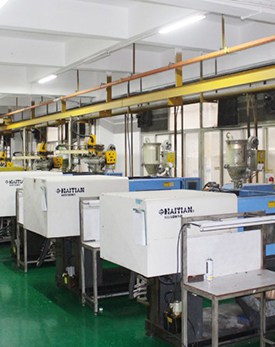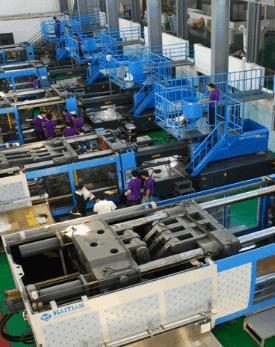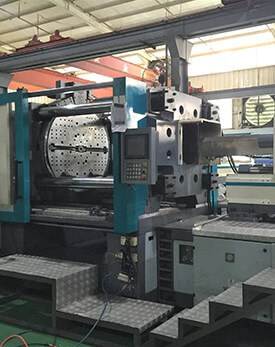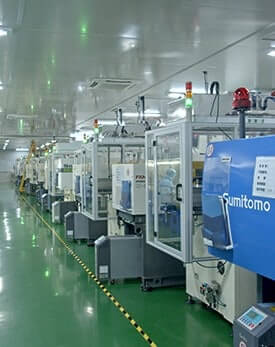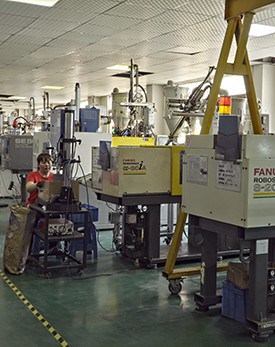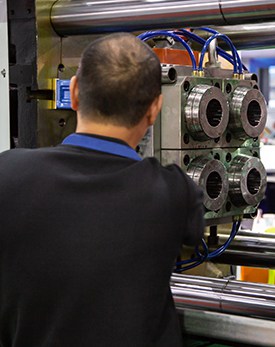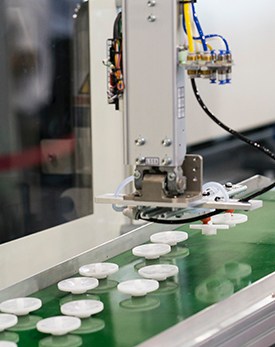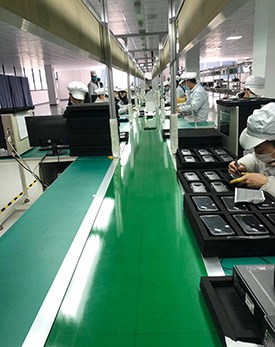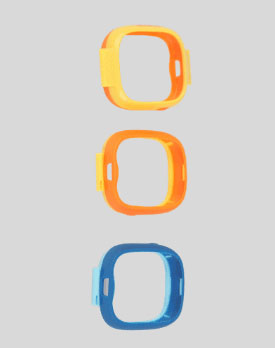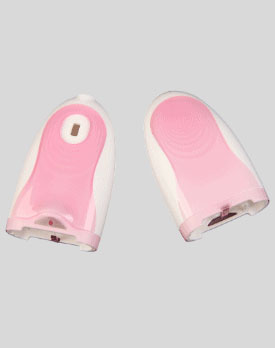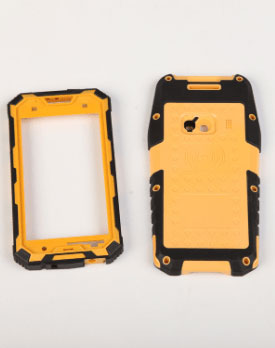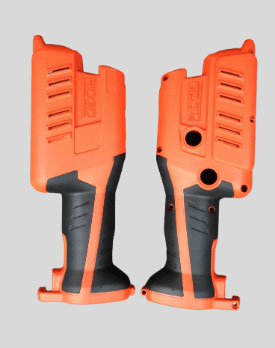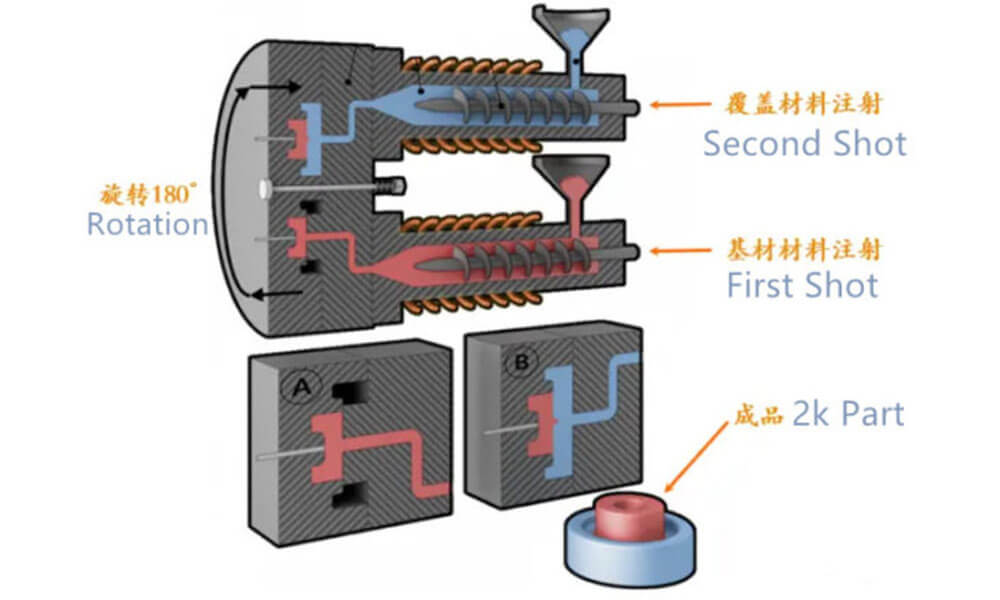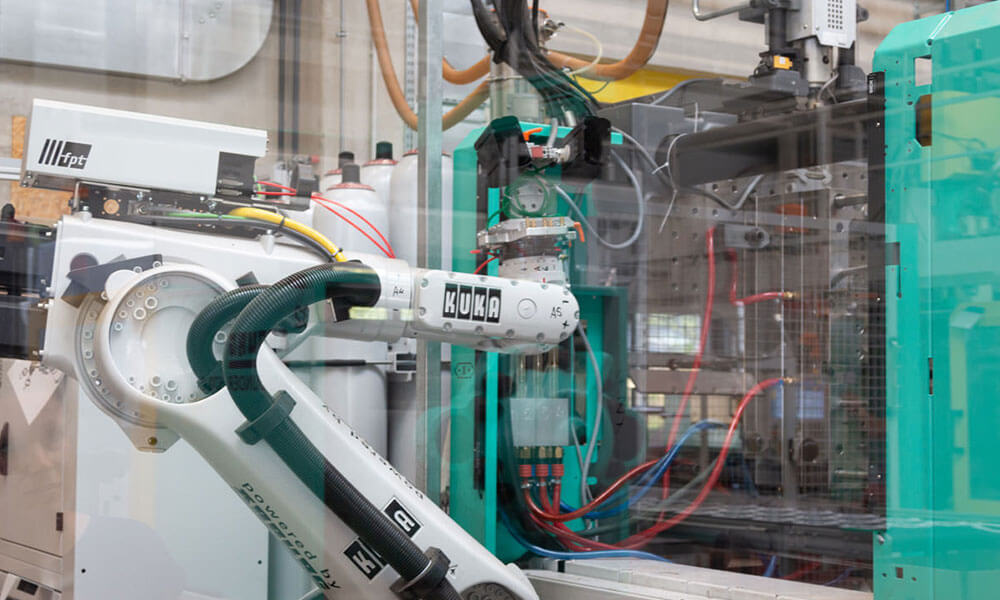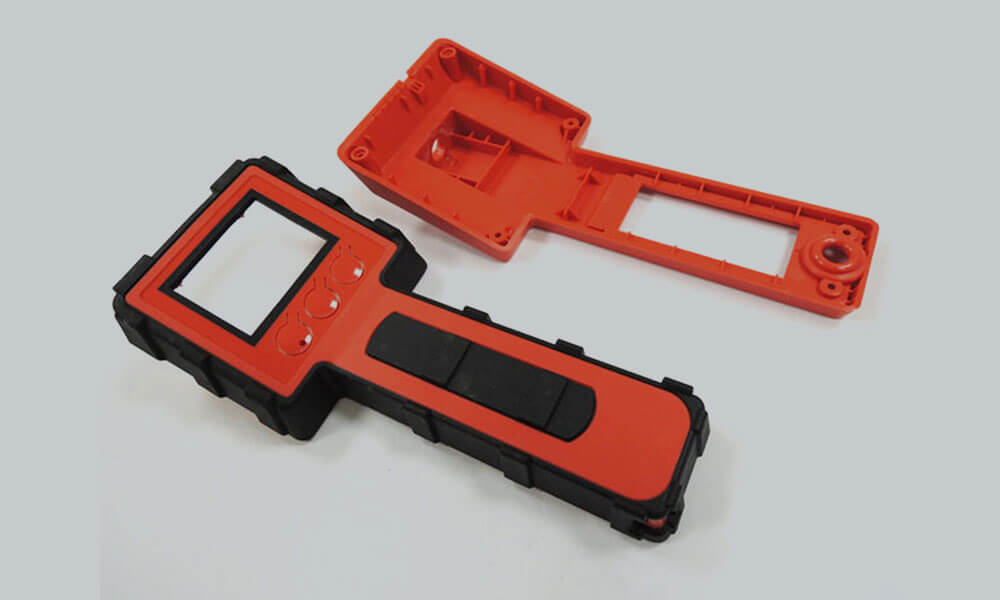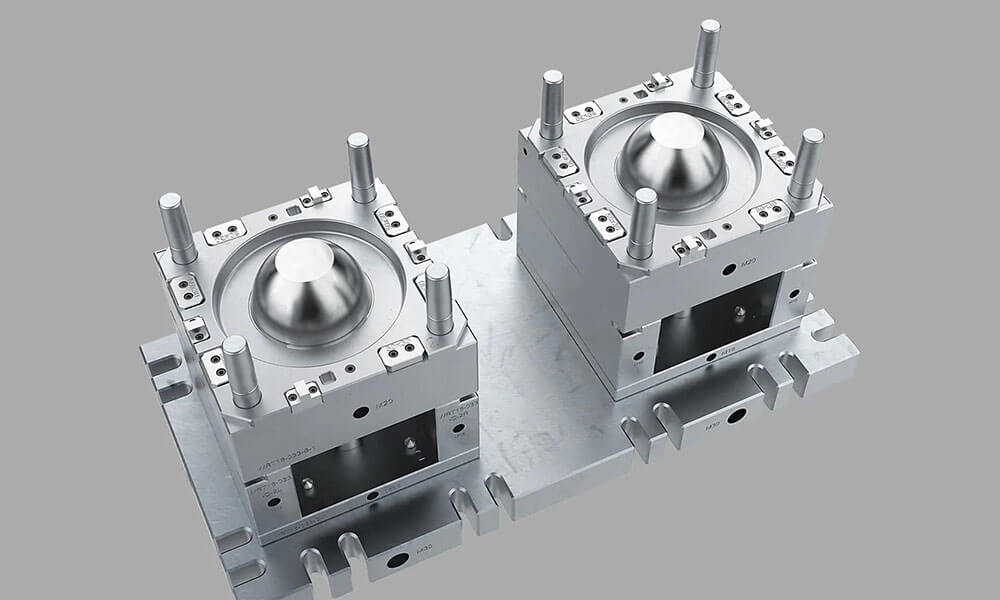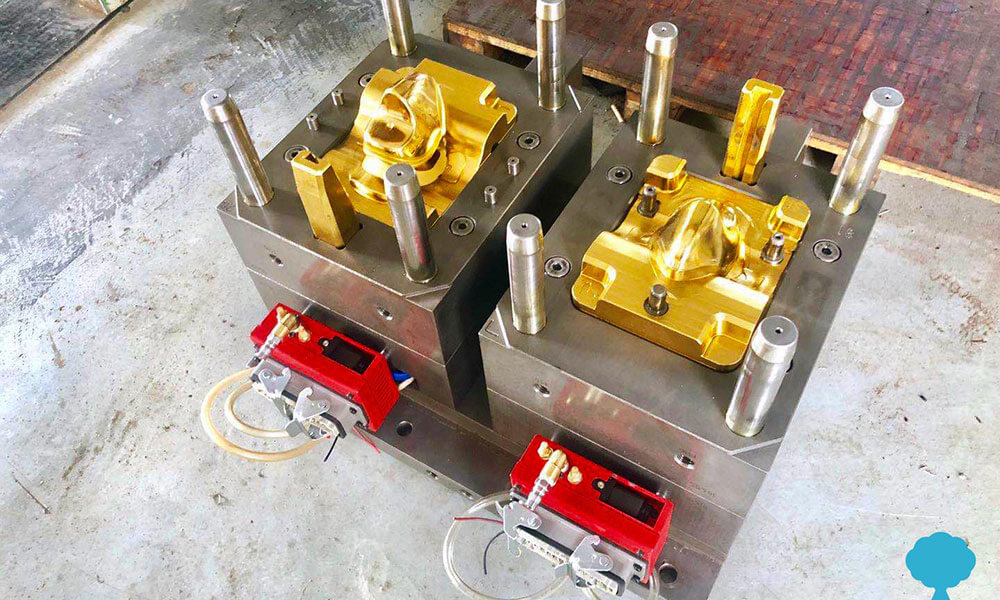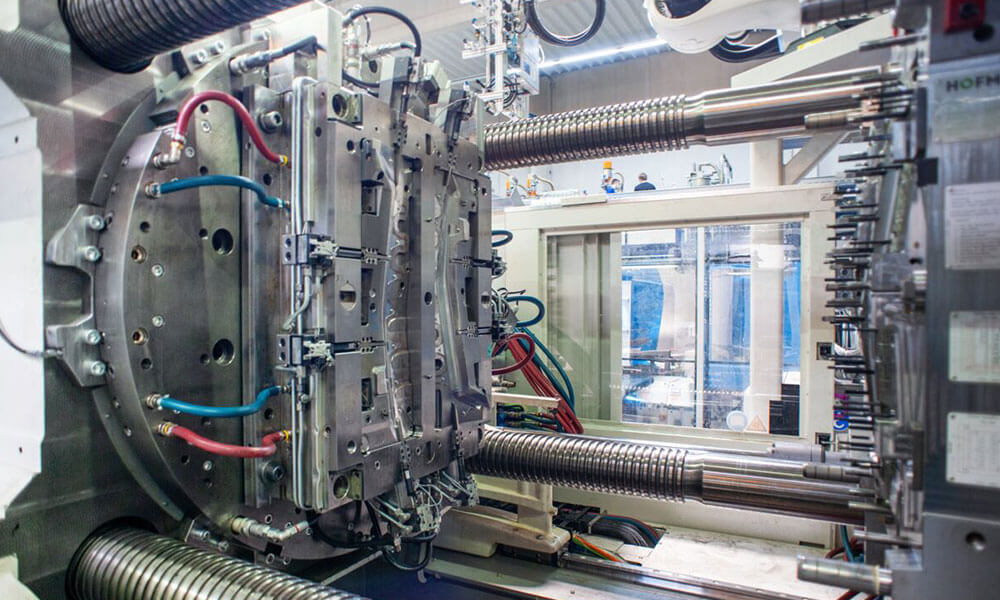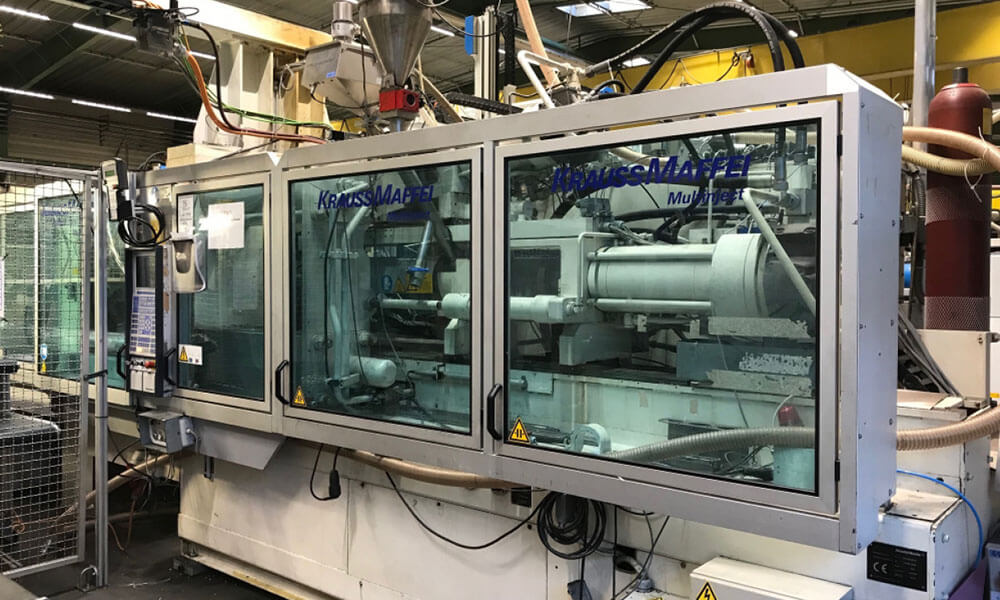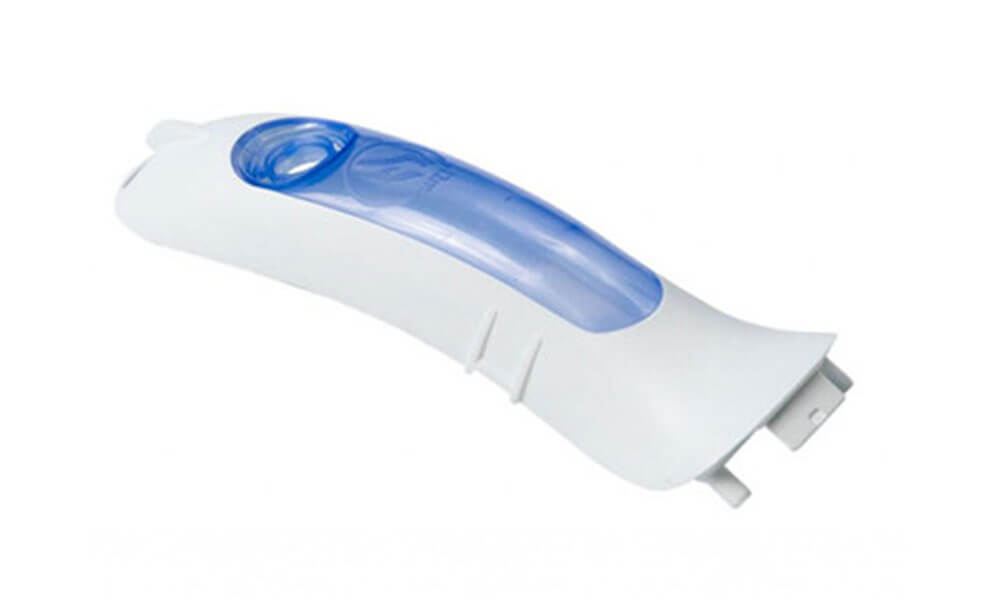Holly 2K Injection Molding Service
Holly is an injection moulding 2K market leader which produces high performance, multi-material parts for a variety of markets including automotive, electronics, home appliances, and medical devices. We provide complete solutions in 2K moulding by combining two or more materials into one part to bring more functionality, reliability, and design freedom.
With our advanced production process and our immense experience, we can produce an extensive variety of materials such as PP, ABS, PC, TPE, silicone, and metal inserts. From small batch prototyping to large orders, we deliver quick turnaround at high speed with quality inspection. Our specialists utilize superior technology and undergo high-quality inspection processes in a bid to offer parts most ideal for your specifications.
At Holly, we are committed to providing value-for-money high-quality 2K molded components with various levels of potential customization such as color matching and surface treatments like texturing, polishing, and chroming. Prioritizing the quality and the satisfaction of the customers, we are your most trusted partner in assured and effective 2K injection molding service.
Explore our 2K injection molding mold
We have 2K injection molding as our specialty, offering effective, versatile services to a variety of industries. The categories of our molds are single-cavity molds, multi-cavity molds, family molds and special-purpose molds. The 2K injection molding technique enables the application of two materials that are different on the same workpiece, which improves product function and appearance, with broad applications in auto components, housing of electronic products and consumer products. By precise control of the injection molding process, we realize the high quality and longevity of our products, meeting the individual demands of our customers.
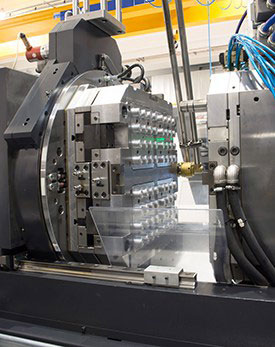
2K injection molding mold
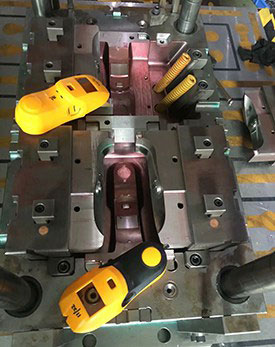
Cove shell 2K injection molding
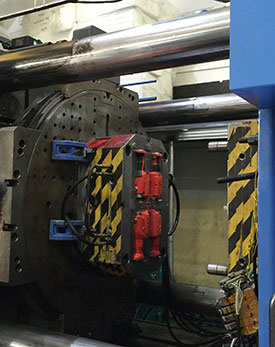
Handle 2K injection molding
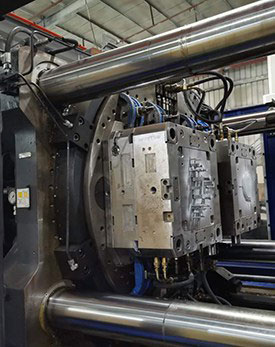
2K injection molding
2K Injection Molding Capabilities
2K Injection Molding Materials Available
|
PP PP is being used extensively for 2K injection molding as it possesses good chemical resistance, is light in weight, and also cost-effective. PP is specially designed for those products that require strength, along with elasticity.PP is combined with resins like TPE or PC in 2K molding and utilized in such applications as parts for car interior components, electric components, and home appliance parts. PP is used in the application of dashboards in automobile panels and in appliance casings, which have strength along with a low weight.
|
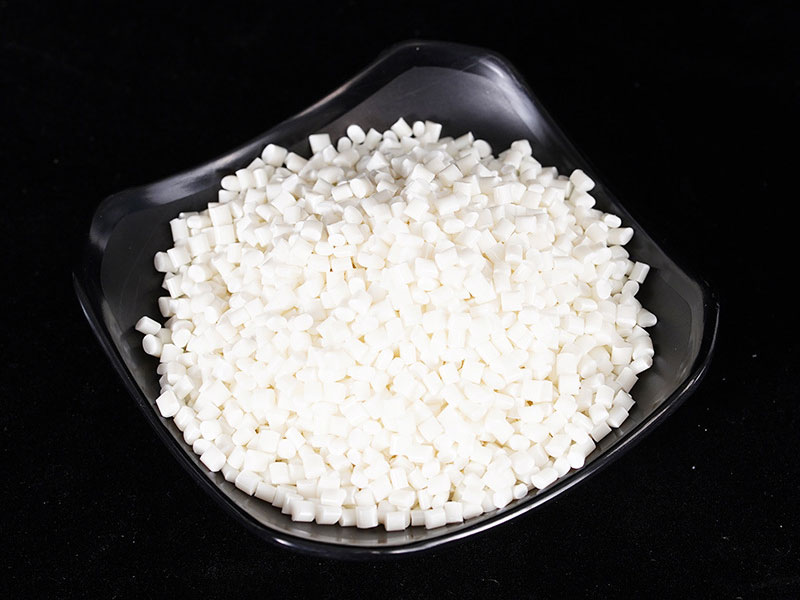 |
|
PS PS is commonly used in 2K injection molding due to its satisfactory clarity, processability, and dimensional stability. It is best used where appearance and manufacturability are of utmost importance. PS in 2K molding is frequently compounded with some other materials like ABS or TPE to produce multifunctional parts to be used in the packaging and consumer electronics market. For example, PS is utilized in electronic equipment housings and packaging materials, wherein it provides a luxury, smooth appearance and reasonable performance.
|
 |
|
PC PC finds widest use in 2K injection molding due to its extremely high impact resistance, toughness, and transparency. PC is optimal to use where maximum durability and optical clarity are required. PC is blended with other materials like ABS or PP in 2K molding for high-performance requirements. PC is utilized, for example, in automobile illumination components, caps of electric components, and protective accessories, where PC exhibits excellent impact resistance and optical properties.
|
 |
|
TPU TPU is an appropriate material for 2K injection molding due to its high impact resistance, abrasion, and flexibility. TPU may be applied in components needing flexibility, yet being hard. TPU is generally mixed with hard ones like ABS or PC in 2K molding to create parts of soft-touch and good mechanical properties. TPU is used extensively in car seals, cell phone covers, and shoe components, where it offers excellent abrasion resistance and a soft, grippy feel.
|
 |
|
PA PA is most prevalent in 2K injection molding since PA is highly thermally stable, mechanically strong, and abrasion resistant. PA would be best in parts that are going to be extremely durable and have low friction. PA in 2K molding primarily blends with other resins like TPE or PC for optimal part performance. Nylon is widely employed in industrial parts, electrical contacts, and auto parts because of the benefits of a combination of hardness, flexibility, and chemical as well as thermal stability.
|
 |
|
Epoxy Resin Epoxy resin is widely employed in 2K injection molding since it possesses high tack, chemical resistance, and thermal stability. It is used wherever bonding strength will be great and electrical insulation is required. Epoxy resin is usually mixed with a small percentage of some other component such as ABS or PC in 2K molding to produce high-strength and high-performance parts. Epoxy resin is used in electric appliances, automotive parts, and industrial items to add strength and heat and severe chemical resistance.
|
 |
|
TPE TPE is a multi-phase material used in 2K injection molding that is rubbery in nature but thermoplastic in processing. It is highly tough, impact-resistant, and flexible. TPE, when incorporated in 2K molding, can most often be blended with hard plastics like PP, ABS, or PC to create parts of soft-touch feel and enhanced comfort. TPE is extensively applied as automotive gaskets, medical device components, consumer items, and grips with enhanced performance in flexibility and strength.
|
 |
|
Silicone Silicone is a very versatile and heat-resistance material that is extensively utilized in 2K injection molding because of excellent thermal stability, resistance, and biocompatibility. Silicone has excellent compatibility with severe temperature resistance as well as flexure conditions. In 2K molding, silicone is primarily combined with constituents like ABS or polycarbonate to endow parts with the flexibility in addition to excellent performance characteristics. Silicone is greatly applied in health equipment, seals of cars, cookware, and household usage, which resist heat, chemicals, and external stress more than other materials.
|
 |
2K Injection Molding Finishing Options
| Name | Description |
|---|---|
| SPI Finishes (A1-A3) | Ranges from smooth, glossy finishes (A1) to more textured, matte finishes (A3), commonly used in consumer goods and automotive parts. |
| VDI Texturing | Standardized texture patterns creating uniform textures, ideal for automotive or appliance parts where a specific texture is required. |
| EDM Texturing | Uses electrical discharge to create delicate, custom textures, often used in premium cosmetic or sophisticated designs. |
| Mirror Polishing | Gives a mirror-finish, high-gloss, typically used on items requiring transparency or a glass-like, reflective finish. |
| Custom Texture | Special pattern or texture, often used for branding or usability design like anti-slip surface. |
| Paint Coating | Provides color or protective coating to the surface, improving appearance and wearability, commonly employed for consumer goods or automobile components. |
| Chroming or Plating | Deposits a metal layer (e.g., chrome or nickel) for increased appearance, corrosion resistance, and strength. |
| Overmolding | Shapes a less rigid material (e.g., TPE, silicone) over a stiffer part to create tactile or sealing characteristics. |
China 2K Injection Molding Manufacturer FAQ
2K Injection Molding FAQ Guide
In the following guide, you will know everything about 2K Injection Molding.
2K injection molding process for parts made of two materials. Some of these two materials have different colors, and some are different in soft and hard, in order to improve the appearance and assembly performance of the product. Comer has a professional injection molding team, we always provide appropriate suggestions according to customer requirements, and exceed customer expectations.
As a professional 2K injection molding manufacturer with 20+ years of experience. Holly has paid 100% enthusiasm for you. Here is a list of frequently asked questions about 2K injection molding. You can check any questions you want to know about 2K injection molding.
1. What are the types of 2K injection molding?
The types of 2K injection molding are as follows.
- Double injection molding.
- Mixed colour modeling.
- Forming.
- Core-pulling 2K injection mold.
2. What are the advantages of 2K injection products?
The advantages of 2K injection products are as follows
- High precision and stable quality.
- Good structural strength and durability.
- Small clearance, beautiful appearance.
- Reduce production costs and increase the value of composite products.
3. What is the working principle of 2K injection molding?
The working principle of 2K injection molding is as follows:
The two-color injection molding machine divides two different plastic materials into two moldings on the same injection molding machine, but the product only comes out of the mold once. This molding process is also called dual injection mold, it works on a set of molds and requires a dedicated two-color injection molding machine.
4. How does 2K injection molding work?
The characteristics of two-needle injection molding are as follows:
- The two shapes of the front mold core are different to form a product, while the two shapes of the back mold core are completely the same.
- After the front and back parts of the mold are rotated 180° from the centre (rear). The mold rotates 180°, the front mold does not move), they must be the same.
- The guide sleeve of the mold blank column must be symmetrical up and down, and the front and back molds must be symmetrical.
- Two independent ejection systems and two ejection rods. The back mold is the same, the thimble is the same, they are in a rotating relationship.
- When designing the mold core before the second injection, in order to avoid the mold core insertion (or friction) before the second injection from damaging the glue position of the first molded product, it can be avoided during mold design. But the strength of each glue location must be carefully considered. During injection molding, for example, whether the plastic will deform under high injection pressure, causing possible deformation of the front end of the batch during injection molding.
- The product size for the first injection can be slightly larger. In the second molding, it can be pressed tighter with another post-mold to achieve the function of sealant. Pay attention to whether the flow of plastic will impulse the first time the product has been molded and deform the glued position during the second injection. If this is possible, we must find an improved method.
- Since the soft part of the product is easily deformed, it is usually injected first, before the hard part.
5. How should 2K injection molds be designed?
The matters needing attention when designing 2K injection mold are as follows:
- The nozzle should be as short as possible and the mold part should be as thin as possible. This is the best way to solve the problem of double injection mold bonding line.
- When designing the first needle, ensure that the thickness of the mold of the second needle is consistent, and prevent the uneven thickness of the mold from causing shading on the surface of the second needle. The second gun is thicker and thinner than the first gun, preferably between 1.5 mm and 0.8 mm.
- When designing the first lens, ensure the consistency of the fleshy thickness of the second lens to prevent the appearance of the second lens from shadowing due to uneven fleshy thickness. Ideally, the second shot is between 1.5 mm and 0.8 mm thick and thin.
- It is desirable that the outer diameter of the two positioning rings be the same, preferably 119.90 mm so that the mold would be positioned more accurately on the molding machine and the clamping problem would be eliminated. It is also recommended that the upper fixing plate be connected to the motherboard with positioning pins.
- For secondary injection molds, the thickness of the male mold, male mold, female mold, and female mold must be the same. The size and accuracy of the guiding device must be the same, and the closing height of the mold must be the same.
- Waterway design is convenient for machine installation and can be designed according to different machines.
- The design of the mold joint is as flat as possible to facilitate subsequent fitter assembly.
- The centres of the two sets of molds should be on the same turning radius, with a difference of 180 degrees.
- The forming mechanism should be completed after two shots, so don’t set the demoulding mechanism in a shot position.
- The first colour gate should cover the second color, preferably a hot runner point gate or a three-plate mold.
- The male mold waterway must be designed between the two molds.
6. What is the clamping sequence of 2K injection mold?
The 2K injection mold clamping sequence is as follows
- When the first male injection mold matches the first female injection mold, the female mold needs to be repaired to prevent a molding surface between the male mold and the second injection female mold.
- When the male model in the first shot matches the female model in the second shot, modify the male model.
- The second shooting male mold matches the second shooting female mold, and the male mold is modified.
- The second shot of the male model matches the first shot of the female model, and modifications are made according to the situation.
7. In the 2K injection molding test, how to make a better-completed test sample?
If we want to get better test samples, we should pay attention to:
- The plastic first shot is harder than the second shot. Prevent the second injection of molten resin from melting the first injection product.
- Coldwater or chilled water may be required for the first injection of the mold. This prevents the product from shrinking due to low temperatures
8. In 2K injection molding, what is the adverse effect of product flash?
In 2K injection molding, the adverse effects of burrs on the product are as follows:
- Low manufacturing efficiency and slow speed.
- More manufacturing manpower.
- Difficult to manufacture.
- The quality is not guaranteed and the lack of products is high.
9. In 2K injection molding, what is the reason for the product burrs?
In 2K injection molding, the reasons for product flash are as follows:
- The first color plastic is not filled
- Large mold fit clearance
- The glue is sprayed too fast
- The second color adhesive is overfilled
- The mold temperature is too high
10. What is the cause of product deformation in 2K injection molding?
In 2K injection molding, the reasons for product deformation are as follows:
- Due to internal stress during demolding.
- Insufficient or uneven mold temperature control.
- The flow direction of the material or filling material.
- Due to improper molding conditions.
- Shape, thickness, and other aspects of the molded product.
11. In 2K injection molding, what is the cause of flow marks at the gate of the product surface?
In 2K injection molding, the reasons for flow marks at the gate of the product surface are as follows:
Because the runner is small when the material rushes directly into the mold cavity through the runner, and then at the junction of the first colour plastic, a volcanic effect will occur.
12. In 2K injection molding, how to solve the flow mark at the gate of the product surface?
- Change the direction of glueing.
- Change the right-angle door to R isolation.
- Change R to the sector.
- Consider whether there will be no cold glue in the hot runner mold of the valve needle and whether the cold material will cause spray marks.
13. How to choose the plastic material for 2K injection molding?
The melting point temperature of the second glue is lower than the melting point temperature of the first glue. Thereby avoiding the secondary injection during the production of molten glue.
- The first material: PC. Abs. PC + Abs. PMMA…
- The second material: PC. Abs. PC + Abs. Pema. TPU…
14. What should be considered when dividing primary and secondary product materials?
- Considering the fluidity of the raw materials, choose an appropriate wall thickness. If the second mold is too thin, it will cause defects such as lack of material and solder marks.
- The wall thickness of the raw material should ensure that the raw material does not shrink to prevent secondary overflow.
- The flow direction and speed of the secondary materials can be changed to eliminate injection molding defects.
15. How to choose the gate of the double injection mold?
For the first gate, priority is given to import and export to ensure products. The flow channel has an automatic cut-off function. The secondary gate does not affect the appearance of the product.
16. What is the application of 2K injection molding?
The 2 K injection molding process is mainly used for products that need to meet certain special functions or appearance requirements. For example, some products need to be waterproof, drip-proof, and dustproof, some products need multiple colours on the surface to meet aesthetic requirements, and some products need good grip and touch. They all need to use two or more materials in one product, and 2K injection molding is required.
17. What are the advantages of 2K injection molding?
The advantages of 2K injection molding are as follows:
- 2K injection molding can produce high-precision and stable products, which is much more stable than Over injection molding.
- 2K injection molding can increase the structural strength of the product and make the product more durable, such as three defense mobile phones and engineering military computers. Improve the surface quality of products and increase the value of products, such as daily necessities.
- 2K injection molding greatly reduces production costs and makes products more competitive in the market.
- 2K injection can focus on various effects of 2K injection products, such as surface softness, ergonomic design, two-color appearance, waterproof, noise reduction, shock absorption, moisture resistance, anti-skid, etc., this reduces the number of parts and saves design space.
18. What are the defects of 2K injection molding?
- The choice of materials is very important. Different plastics have different physical properties. The compatibility method will directly affect the combination of the two materials. The difference in plastic shrinkage should be small.
- The difference has a greater impact on the compressive strength of the joint, which easily leads to product shrinkage.
- The product structure should not be too complicated.
19. How to maintain 2K injection mold?
- Check whether there are impurities and dirt in various parts of the mold. For plastics and impurities remaining in the mold, scrub with cotton yarn and remove the adhesive.
- Reasonably choose the clamping force. Excessive clamping force will increase power consumption and damage transmission components.
- The transmission parts should be well lubricated and must be kept lubricated.
- It is not allowed to hit any part of the mold with heavy objects such as a hoe. It can avoid tool deformation or even damage.
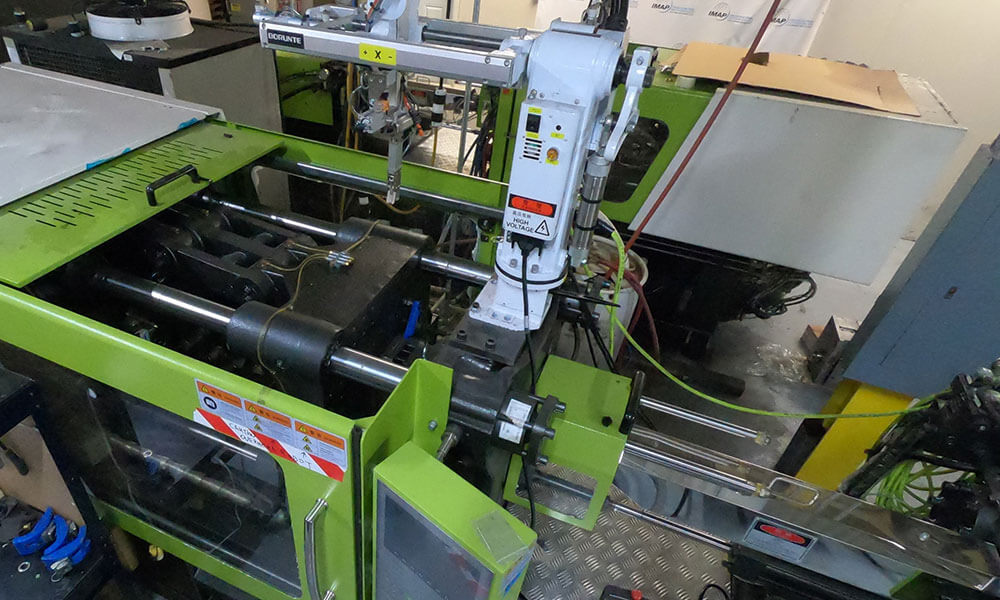
20. What is the basic principle of 2K injection molding?
- In 2K injection molding, hard glue is used once and soft glue is used twice.
- In 2K injection molding, transparent glue is used once and opaque glue is used twice.
- In 2K injection molding, the plastic molding temperature is high at one time, and the plastic molding temperature is low at the second time.
- 1. What are the types of 2K injection molding?
- 2. What are the advantages of 2K injection products?
- 3. What is the working principle of 2K injection molding?
- 4. How does 2K injection molding work?
- 5. How should 2K injection molds be designed?
- 6. What is the clamping sequence of 2K injection mold?
- 7. In the 2K injection molding test, how to make a better-completed test sample?
- 8. In 2K injection molding, what is the adverse effect of product flash?
- 9. In 2K injection molding, what is the reason for the product burrs?
- 10. What is the cause of product deformation in 2K injection molding?
- 11. In 2K injection molding, what is the cause of flow marks at the gate of the product surface?
- 12. In 2K injection molding, how to solve the flow mark at the gate of the product surface?
- 13. How to choose the plastic material for 2K injection molding?
- 14. What should be considered when dividing primary and secondary product materials?
- 15. How to choose the gate of the double injection mold?
- 16. What is the application of 2K injection molding?
- 17. What are the advantages of 2K injection molding?
- 18. What are the defects of 2K injection molding?
- 19. How to maintain 2K injection mold?
- 20. What is the basic principle of 2K injection molding?

